Civil War Diarist of Vicksburg
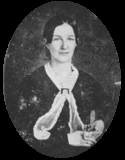 Vicksburg, Mississippi is located on a well-fortified west-facing cliff overlooking the Mississippi River. The Siege of Vicksburg was initiated by the Union Army under General Ulysses S. Grant, whose aim was to gain control of the Mississippi River by capturing this Confederate riverfront stronghold and defeating General John C. Pemberton’s Confederate forces stationed there.
Vicksburg, Mississippi is located on a well-fortified west-facing cliff overlooking the Mississippi River. The Siege of Vicksburg was initiated by the Union Army under General Ulysses S. Grant, whose aim was to gain control of the Mississippi River by capturing this Confederate riverfront stronghold and defeating General John C. Pemberton’s Confederate forces stationed there.
Emma Harrison was living with her brother Dr. Thomas Harrison and his wife at their plantation in Alabama after the death of her first husband, when she met Dr. William Balfour of Vicksburg, Mississippi. Emma later married Dr. Balfour, who had attended medical school with her brother, and moved with him to Vicksburg.
Emma Balfour wrote one of the most accurate accounts of the Siege of Vicksburg. Emma’s home, in the heart of town, provided her with a front row seat to all the events unfolding between May and July of 1863.
The Confederate Retreat
As the Union army pushed the Southerners back toward Vicksburg, General John C. Pemberton – whose headquarters were next door to the Balfour House – ordered all non-combatants to leave the city. But many, in particular the women, refused to go.
On May 16, Pemberton’s army, badly shaken, ran for the cover of the Vicksburg defenses, with General Grant’s army hot on their heels. The citizens of Vicksburg watched in fear as the soldiers poured into the city. Emma Balfour stood in her doorway as they filled the streets. She put her family and servants to work carrying pails of water to the street for the men to drink, and set out all of the food she had on the porch for the men to eat.
Emma made the first entry in her diary on May 16, 1863:
I hope never to witness again such a scene. From twelve o’clock until late in the night, the streets and roads were jammed with wagons, cannons, horses, men, mules, stock, sheep, everything you can imagine that appertains to an army being brought hurriedly within the entrenchment… What is to become of all the living things in this place – God only knows.
Emma’s husband was more worried about the livestock. He watched as the army’s horses and mules and “all of the stock of all kinds for… twenty miles around” were herded into the city, and he was afraid of a stampede. The next day things looked little better. There was very little gunfire, but there was a lot of jostling and movement, for the city had suddenly absorbed over 30,000 soldiers.
Slowly, General Grant felt his way toward the high ground surrounding the city. Late in the afternoon, the people could hear the sound of firing, and they were told that a battle would be fought at daybreak. During the night, the city was lighted by the lurid glare of burning buildings and homes built along the outskirts, destroyed by the engineers to clear avenues of observation and fire.
As the night passed, the wings of Grant’s army encircled the city. The Confederates were locked in, and Grant thought he had them trapped. He ordered a quick assault against the Confederate lines and asked Admiral Porter’s support from gunboats in the river. At daybreak the firing began, then welled up to a crescendo.
Emma Balfour described the attack:
It was terrific! [The assaulted] part of the town is… very near so we had the full benefit. It is just where the railroad crosses our lines. I was up in my room sewing and praying in my heart, oh so earnestly for our cause, when Nancy rushed up actually pale…
I went to the back gallery with my glass and [saw] men pouring over the hill… Negroes were darting through the shells, [and] a brigade [was] running past towards this point, so I thought it might not be so bad as she thought and I quieted her a little.
About nine o’clock in the morning, the gunboats towed some mortars into range, and there was a rushing into caves… We went into a cave for the first time… Just as we got in several machines exploded… just over our heads, and at the same time two riders were killed in the valley below us by a twenty-four pound shell from the east side.
As all this rushed over me and the sense of suffocation from being underground, the certainty that there was no way of escape, that we were hemmed in, caged, for one moment my heart seemed to stand still then my faith and courage rose to meet the emergency, and I have felt prepared ever since and cheerful…
May 18: The Siege Begins
During the siege, Union gunboats lobbed over 22,000 shells into the town and army artillery fire was even heavier. As the barrages continued, suitable housing in Vicksburg was reduced to a minimum. A ridge, located between the main town and the rebel defense line, provided the citizens with lodging for the duration.
The Caves of Vicksburg
For civilians trapped in the city, the siege proved to be a time of hourly uncertainty. Between brief lulls came terror and extreme mental stress. Confederate commanders urged citizens to occupy caves built the previous summer and to dig more for protection from the artillery fire. The soil around Vicksburg was easy to dig, yet firm enough so that caves could be dug into the sides of the hills without great fear of cave-ins.
People carefully selected cave sites in order to minimize the risk of being hit with artillery shells. Both white citizens and their slaves labored with shovels. The caves could be simple one-room abodes or multi-room suites. They contained parlors and bedrooms that were furnished with items from home. Sometimes there were openings from one family cave to another for escape purposes, in case an artillery shell caused the earth to crumble. Most cooking was done outside the main cave entrance.
Over 500 caves were dug into the yellow clay hills of Vicksburg. Whether houses were structurally sound or not, it was deemed safer to occupy these dugouts. They tried to time their outside movements and foraging with the rhythm of the cannonade. Because of these caves, the Union soldiers gave the town the nickname of Prairie Dog Village.
As Union siege lines tightened around the Confederate troops and town, supplies dwindled. With scarce goods priced beyond their reach, people improvised. The town’s food supply grew dangerously low as the siege wore on. Cooks served mule meat at the dinner table.
The Women of Vicksburg
For the ladies trapped in the city, daily existence quickly went from a life of ease and abundance to one of scarcity and near-starvation. Upper-class white women often went from comfortable circumstances to deprivation and humiliation; lower-class white women went from not having much to having even less, and slave women went from a structured existence to uncertainty.
Whatever their station, the women who stayed in town struggled to survive. Their surviving letters and diaries tell stories of both physical and mental terror. Still, the women of Vicksburg remained defiant, and stood as inspiration to the rapidly deteriorating hopes of the Confederate troops, as so forcefully stated by Emma Balfour:
The general impression is that they fire at this city, in that way thinking that they will wear out the women and children and sick, and General Pemberton will be impatient to surrender the place on that account, but they little know the spirit of the Vicksburg women and children if they expect this.
Emma Balfour still refused to go into the caves unless she was forced, but a night in her home was no better than a damp, crowded, mosquito infested cave, or so it appears from her diary entry of May 31:
The shelling from the mortars was worse than usual last night… I could hear the pieces falling all around us as the shells would explode, and once I thought our time had come… The mortars [fired] all night. We soon perceived that we could not retire while they fired as they had changed the range, and every shell came either directly over us or just back or front of us, so we made up our minds to sit up and watch, hoping, however, that they would cease about midnight, as they sometimes do… but no, all night it continued to add to the horror.
At 12 o’clock the guns all along the lines opened and the parrot shells flew as thick as hail around us!… We had gone upstairs determined to rest lying down but not sleeping, but when these commenced to come it was not safe upstairs, so we came down in our dining room and lay down upon the bed there, but soon found that would not do as they came from the southeast as well as east and might strike the house.
Still from sheer uneasiness we remained there until a shell struck in the garden against a tree, and at the same time we heard the servants all up and making exclamations. We got up thoroughly worn out and disheartened and after looking to see the damage, went into the parlor and lay on the sofas there until morning, feeling that at any moment a mortar shell might crash through the roof…
Emma might justifiably be called a member of the local aristocracy; her husband was a successful doctor and she was on close terms with the leading generals and her statement might be said to reflect the sentiments of only a portion of the population. But it was nevertheless valid.
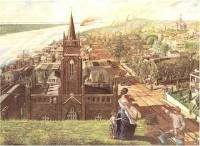
The View from Sky Parlor Hill
Jerry McWilliams, Artist
This view of Vicksburg shows the early days of the siege, with flowers blooming and birds singing. The citizens visited Sky Parlor Hill daily to watch the battle in the distance.
The Surrender of Vicksburg
The siege continued through the month of June, as supplies and food ran out. The Rebels were trapped, and they knew it. On the evening of July 3, General Pemberton met with his generals and made the decision to surrender Vicksburg.
On July 4, 1863, the victorious Union Army marched into Vicksburg, and the United States flag was raised over the courthouse, and Emma’s home was taken as military headquarters for the Union occupation force commanded by General James B. McPherson.
Despite the ferocity of the Union fire against the town, fewer than a dozen civilians were known to have been killed during the entire siege. The women of Vicksburg contributed greatly to the defense of the city and to the welfare of the troops. And though, in the end, they lost almost everything but life itself, they did endure.
Having to surrender was bad enough, but surrendering on Independence Day made things worse for the citizens, and they did not forget it for 82 years. Vicksburg did not celebrate the holiday again until July 4, 1945, at the end of World War II.
The thread of Emma Balfour’s life is lost after the end of the siege of Vicksburg. I pray that the balance of her life was happy, and peaceful.
SOURCES
Vicksburg Under Siege
Vicksburg During the Civil War
Vicksburg National Military Park
Civil War Diaries: Key to the Past
Vicksburg: A People At War 1860-1865
A Photographic Tour Of Civil War Vicksburg
A Culture Transformed: Women in the Civil War – PDF FILE
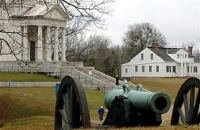
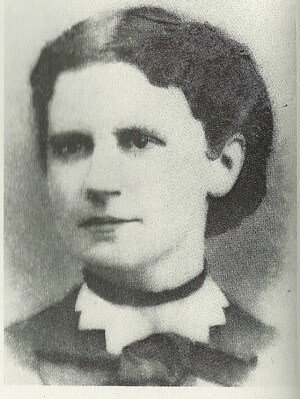
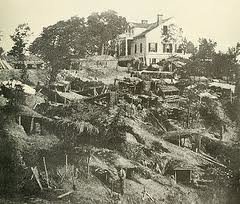
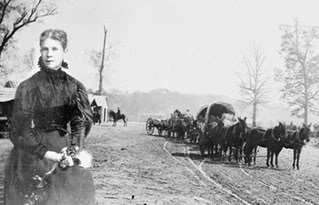
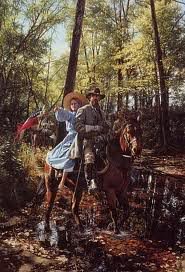
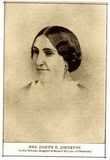
Emma Balfour became Mt. Vernon Ladies Association Vice-Regent from Mississippi, Mt. Vernon home of George and Martha Washington, from 1873-1885.